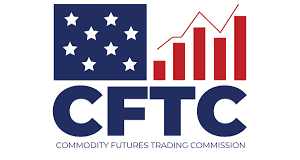HOW THE OIL MARKET WORKS
Luckily, you don’t need to handle large amounts of crude in order to trade the oil markets. That’s because most oil and gas trading is handled via futures.
WHAT ARE OIL TRADING FUTURES?
Oil trading futures are contracts in which you agree to exchange a set amount of oil at a fixed price on a set date. They are traded on futures exchanges and are the most commonly used method of buying and for crude oil trading.
While oil traders use futures to insure against the adverse effects of oil price volatility, importers and exporters can use them to speculate on oil without buying or selling the commodity itself. That’s because the prices of oil trading futures will move as the value of oil goes up or down.
So instead of buying oil, storing it, waiting for its price to increase, and then selling it on and arranging for it to be delivered, you can buy an oil trading futures contract and then sell the contract before it expires. In doing so, you’re taking advantage of the same increase in price without the same logistical effort.
OIL OPTIONS
An oil option is like a futures contract, but with one key difference. With an oil option, you have a right to buy a set amount of oil before a set date at a set price – but no obligation to trade if you don’t want to. Options also provide a method of trading on oil price movements without having to take any delivery of the commodity itself for crude oil trading.
WHERE ARE OIL FUTURES TRADED?
Oil futures are traded on exchanges, just like shares. But unlike shares, they are traded in the form of oil benchmarks. This is because oil doesn’t come out of the ground in the same form worldwide, and oil benchmarks enable traders to identify the quality and drilling location of the oil they are buying and selling.
The two most popular oil benchmarks are Brent Crude and West Texas Intermediate (WTI), traded on the Intercontinental Exchange (ICE) and New York Mercantile Exchange (NYMEX). You can trade both of these benchmarks with IG, alongside various other oil and gas benchmarks: including Heating Oil, Natural Gas, and No Lead Gasoline in the same way as crude oil trading.
FACTS ABOUT CRUDE OIL TRADING
Trading crude oil is referred to as one of the leading oil trading commodities worldwide. ”Black gold” and “mother of all commodities” are two phrases that are referred to a raw material extracted from Middle Eastern countries. It is widely used for everything from cars to cosmetics, petroleum, plastics, and pharmaceuticals, to fabrics.
CRUDE OIL TRADE, ONE OF THE MOST EXCLUSIVE TRADING COMMODITIES
Trading crude oil is considered an extremely valuable trading product in the commodities markets. It is mainly refined in items used every day, such as pharmaceuticals, gasoline, and diesel. Therefore, it is considered one of the most leading energy sources with its demand constantly increases day by day.
What are oil spot prices?
Oil spot prices show the cost of buying or selling oil and taking delivery immediately – or on the spot – instead of at a set date in the future. So while futures prices reflect how much the markets believe oil will be worth when the future expires, spot prices show how much it is worth right now.
Three ways of trading oil
There are three main ways of speculating on oil price movement: futures and options, CFD trading, or investing via equities and ETFs in crude oil trading.
BUY FUTURES AND OPTIONS
You’ll need to use the right exchange for the oil benchmark you wish to trade to trade futures and options. Most exchanges have criteria for who is allowed to trade on them, so professionals undertake the majority of futures speculation instead of individuals. If you want to trade options, you’ll need an options broker.
TRADE VIA CFDS
CFDs enable you to trade on the changing prices of futures and options without buying and selling the contracts themselves. And instead of trading on a commodities exchange, you create an account with a leveraged provider. This brings several benefits for crude oil trading:
OIL INVESTMENT
Instead of trading individual markets, you can get exposure to oil via the shares of oil companies and oil exchange-traded funds (ETFs). The prices of oil companies are heavily influenced by the price of oil and can sometimes offer good value compared to trading oil itself. In addition, you can use ETFs to invest in oil benchmarks or a basket of oil stocks.
HOW TO PLACE YOUR FIRST OIL TRADE
1. Open an account
To trade on oil prices, you’ll need to open an account. It takes a matter of minutes, can be done entirely online, and there’s no obligation to fund once you’ve finished your application.
However, you will need to fund before you place your first trade. Investing in a trading account is simple.
If you’d like to try out oil trading without the risk of losing any capital, there are many demo accounts available. Your demo will come preloaded with virtual funds, which you can use to trade live oil markets.
2. FIND YOUR FIRST OPPORTUNITY
You can use your account to trade Brent Crude and WTI (Called US Light Crude on the platform), also referred to as crude oil trading. And as well as Heating Oil, Natural Gas, and No Lead Gasoline. And you can access a variety of tools to help you identify the right time to open your first position, including:
Oil trading signals, which tell you when opportunities arise with details on how to take advantage
Alerts, which notify you when certain conditions you’ve set have been fulfilled
Technical indicators, including MACD, Bollinger Bands, and RSI
3. OPEN YOUR POSITION
Once you’ve decided the market you want to trade, you can open your position.
Open the deal ticket to place your trade. First of all, you’ll enter your stake, which dictates the profit or loss you’ll make when the market moves. You can also choose to add a stop or a limit here, which will automatically close your position once it hits a certain level.
Bear in mind, though, that a basic stop loss does not guarantee your position will close at the exact level you specify – if the market suddenly gaps beyond your stop level, it’s possible your position will be closed at a worse level than requested.
If you think oil is going up in value, then ‘buy’ your chosen market. If you think it’s headed down, then ‘sell’ it.
4. MONITOR AND CLOSE YOUR POSITION
Now your trade is open. You’ll want to keep a close eye on it – or use the appropriate monitoring tools – and decide when the right time is to either cut your losses or take your profits. You can also add, remove or amend any stops or limits once your position is open.
To close a trade, you click on your position and trade in the opposite direction when you open. So, if you bought the oil, then you’d sell it. If you’d sold oil, then you buy it.
Your profit or loss is determined by deducting the price at which you opened the position from the price at which you closed it and multiplying the result by your position size. Thus, if you bought the market at the outset, a positive figure indicates a profit and a negative one a loss. If you sold it, then it’s the opposite.














